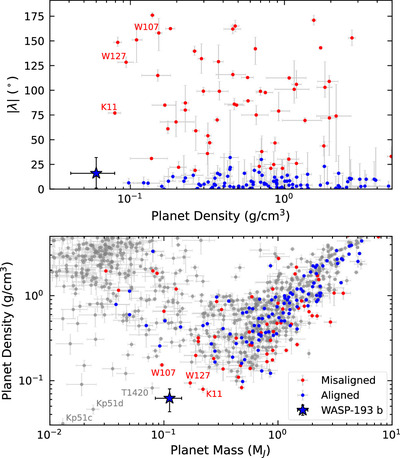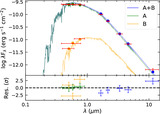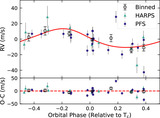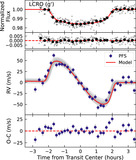Image Details

Caption: Figure 6.
Top: planets with measured projected stellar obliquity, as a function of bulk density. WASP-193 b is the least dense planet with such a measurement, and is marked with a star. Planets with measured obliquities are shown in red if they are consistent with significant misalignment with their host star’s spin (λ at least 1σ greater than 10°); and in blue for well-aligned orbits (aligned to better than 10°, roughly the scale at which our solar system is aligned). Bottom: masses and densities of known transiting exoplanets. Objects with obliquity measurements are colored as in the top panel; those without such measurements are shown in gray. The other known super-puffs are labeled (WASP-107 b: W107; WASP-127 b: W127; KELT-11 b: K11; TOI-1420b: T1420; Kepler-51 c/d: Kp51c/d). Of these, only W107, W127, and K11 have obliquity measurements and all show significant misalignments. In both panels, we use the same quality cuts on mass and radius measurements as in Figure 5. Mass and density data from the NASA Exoplanet Archive, while obliquity measurements are as compiled by S. H. Albrecht et al. (2022) and E. Knudstrup et al. (2024).
Copyright and Terms & Conditions
© 2025. The Author(s). Published by the American Astronomical Society.








